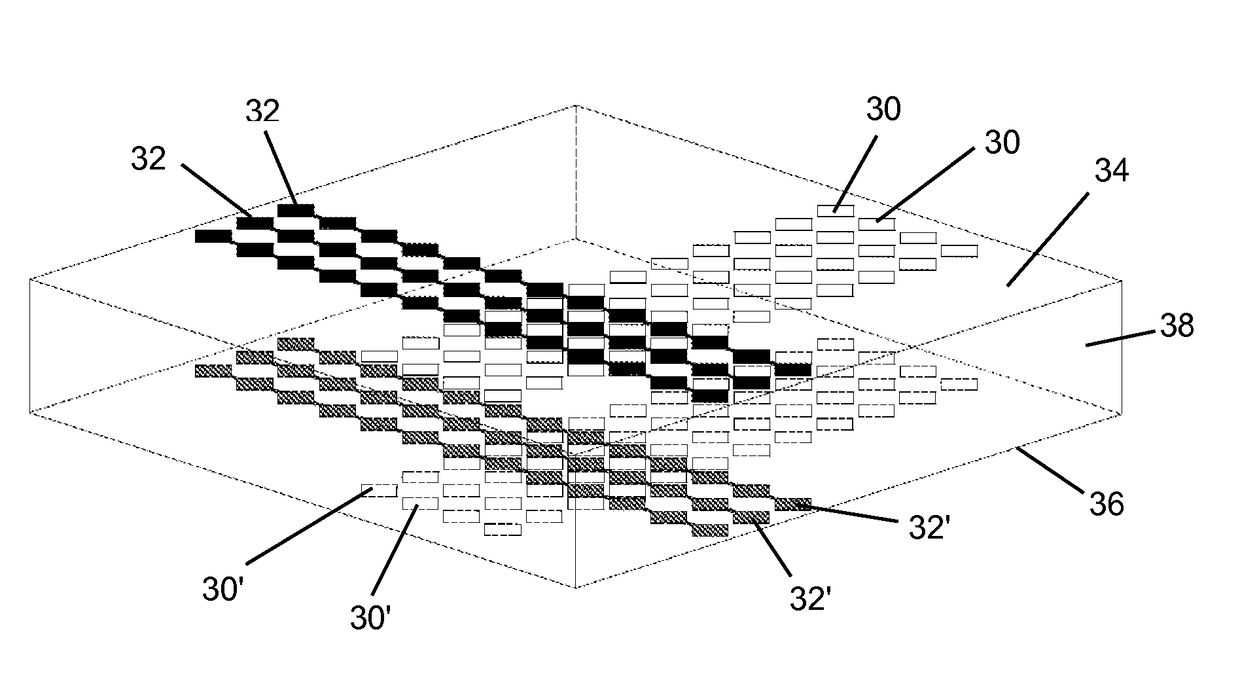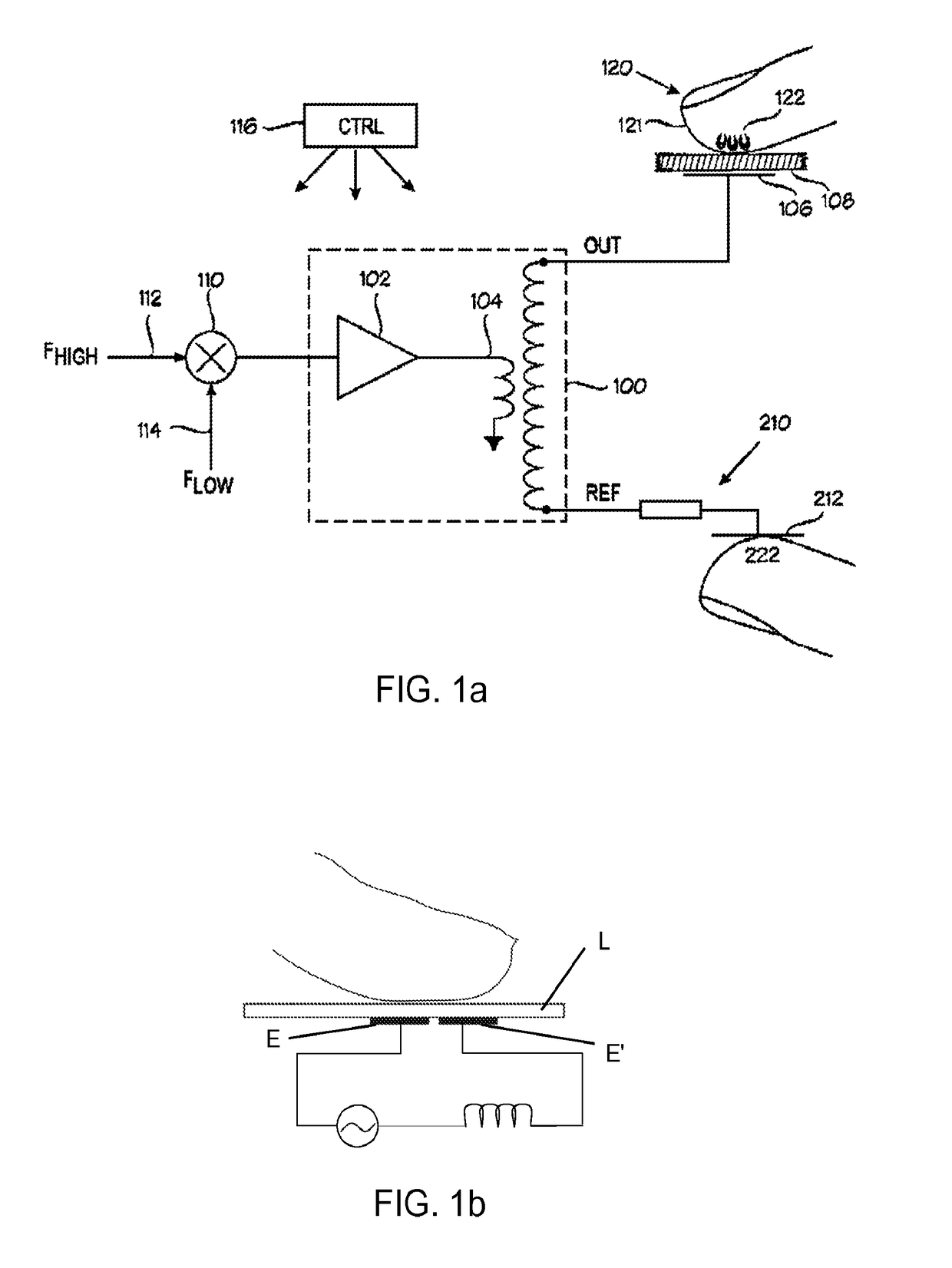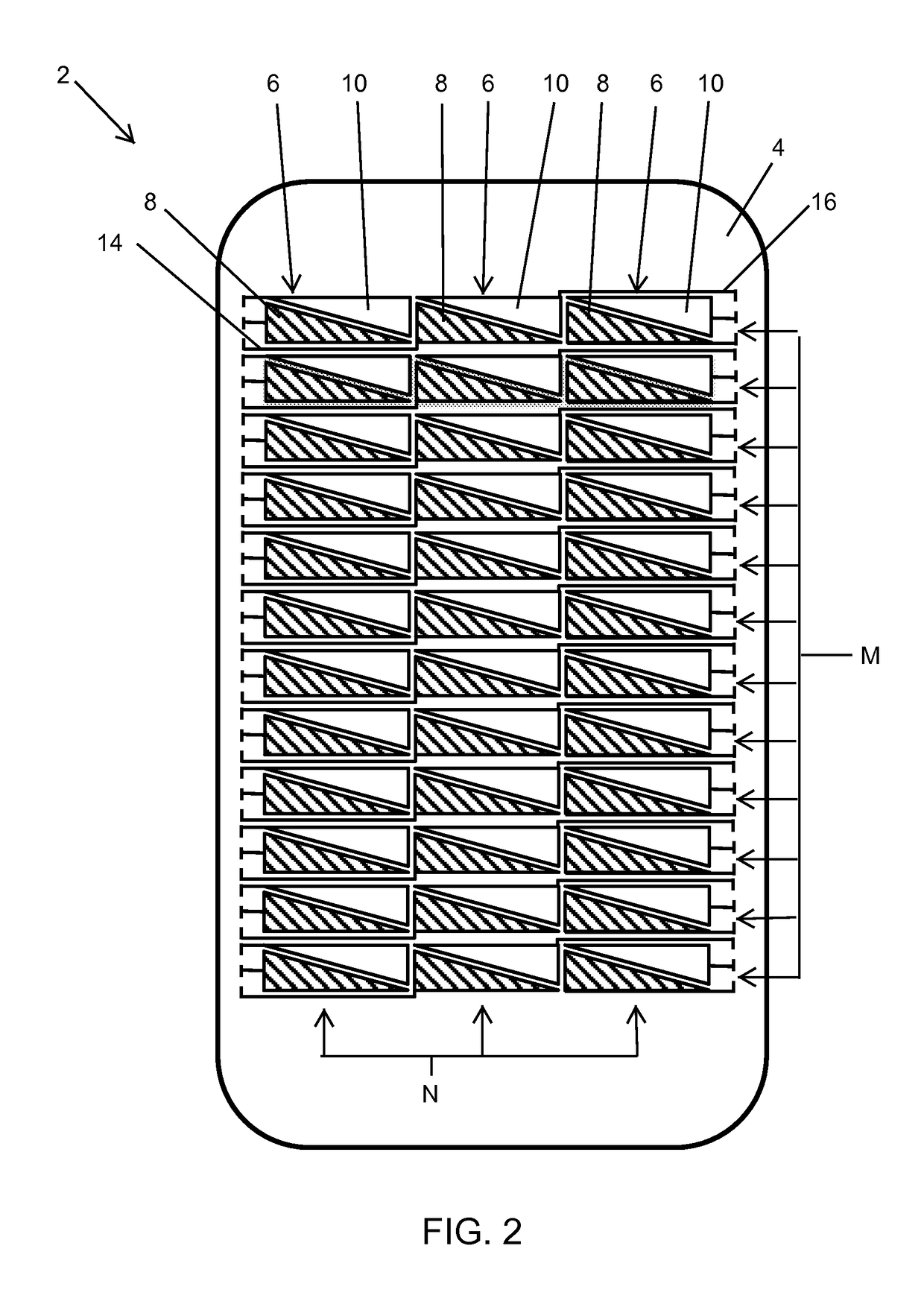Haptic display with simultaneous sensing and actuation
a technology of simultaneous sensing and actuation, applied in mechanical pattern conversion, instruments, computing, etc., can solve problems such as vibration, difficult to achieve, and not support multi-point haptics
- Summary
- Abstract
- Description
- Claims
- Application Information
AI Technical Summary
Benefits of technology
Problems solved by technology
Method used
Image
Examples
Embodiment Construction
[0055]The present disclosure provides several examples relating to touch interface devices that are intended to provide multi-point haptics by use of simultaneous sensing and actuation (SSA) in a surface haptic device (SHD), and electronic controllers therefor. The touch interface devices include a substrate to which electrodes are connected, and a controller operably connected with the electrodes for generating haptic effects and sensing finger location. A controller may utilize any of the approaches disclosed herein and be configured to operate with any of the patterns of electrodes. In one example, the multi-point haptics having simultaneous sensing and actuation may be facilitated by using mirrored electrodes. However, it has been discovered that the methods of SSA and ghost disambiguation taught herein benefit from but do not require use of mirrored electrodes. Indeed, it will be appreciated that a system and methods for providing a touch interface of the present disclosure gen...
PUM
 Login to View More
Login to View More Abstract
Description
Claims
Application Information
 Login to View More
Login to View More - R&D
- Intellectual Property
- Life Sciences
- Materials
- Tech Scout
- Unparalleled Data Quality
- Higher Quality Content
- 60% Fewer Hallucinations
Browse by: Latest US Patents, China's latest patents, Technical Efficacy Thesaurus, Application Domain, Technology Topic, Popular Technical Reports.
© 2025 PatSnap. All rights reserved.Legal|Privacy policy|Modern Slavery Act Transparency Statement|Sitemap|About US| Contact US: help@patsnap.com



